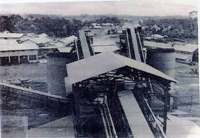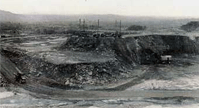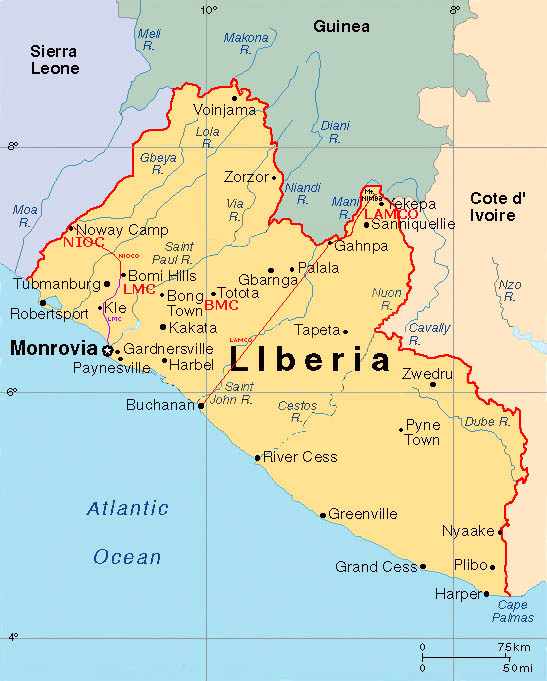|
Iron ore The start of operations of Liberia’s first iron ore mine |
||||||
|
|
|
|||||
|
The start of a new era for Liberia Four to five years after he had signed the concession agreement Lansdell Christie - who, as was shown above, lacked the capital and the expertise to start a mining venture - had realized virtually everything needed to start the mining operations. He had attracted the necessary capital, mainly from the USA, and technical know-how (Dutch/US). He had also secured the marketing of the product (iron ore) through sales agency agreements (US/Dutch). Moreover, he had benefited from the infrastructural improvement financed by the Liberian Government with a US loan. The Free Port of Monrovia opened in July 1948 and in late 1949 the bridge over the St Paul river was officially opened – and named Tubman bridge, after President Tubman. The railroad was completed in April 1951 and the subsequent shipment of iron ore from Bomi Hills, Liberia, to the USA in many respects marked the beginning of a new era for Liberia. |
|||||
|
Liberia, Africa's largest iron ore exporter The Liberia Mining Company was the first of four iron ore companies which produced and shipped such large quantities of iron ore that in the 1960s and 1970s Liberia became Africa’s largest iron ore exporter and even the third on the world list of iron ore exporters. In 1958 followed a concession agreement with the National Iron Ore Company (NIOC) for the exploitation of the Mano river iron ore deposits. Then followed LAMCO JV, the Liberian American-Swedish Minerals Company Joint venture, which became operational in 1960/61. LAMCO JV exploited the extremely rich Nimba mountains iron ore deposits. The investments in the LAMCO JV then were the largest Swedish investment abroad after 1945. The fourth mining company, Bong Mining Company (BMC), was created following a concession agreement with German investors in 1958. The mine opened in 1965. ‘Bong mine’ as the company was and still is colloquially called in Liberia, was then the largest German investment in Sub-Sahara Africa. |
||||||
 Click on map to supersize |
||||||
|
|
|
||||
| © fpm van der kraaij |



